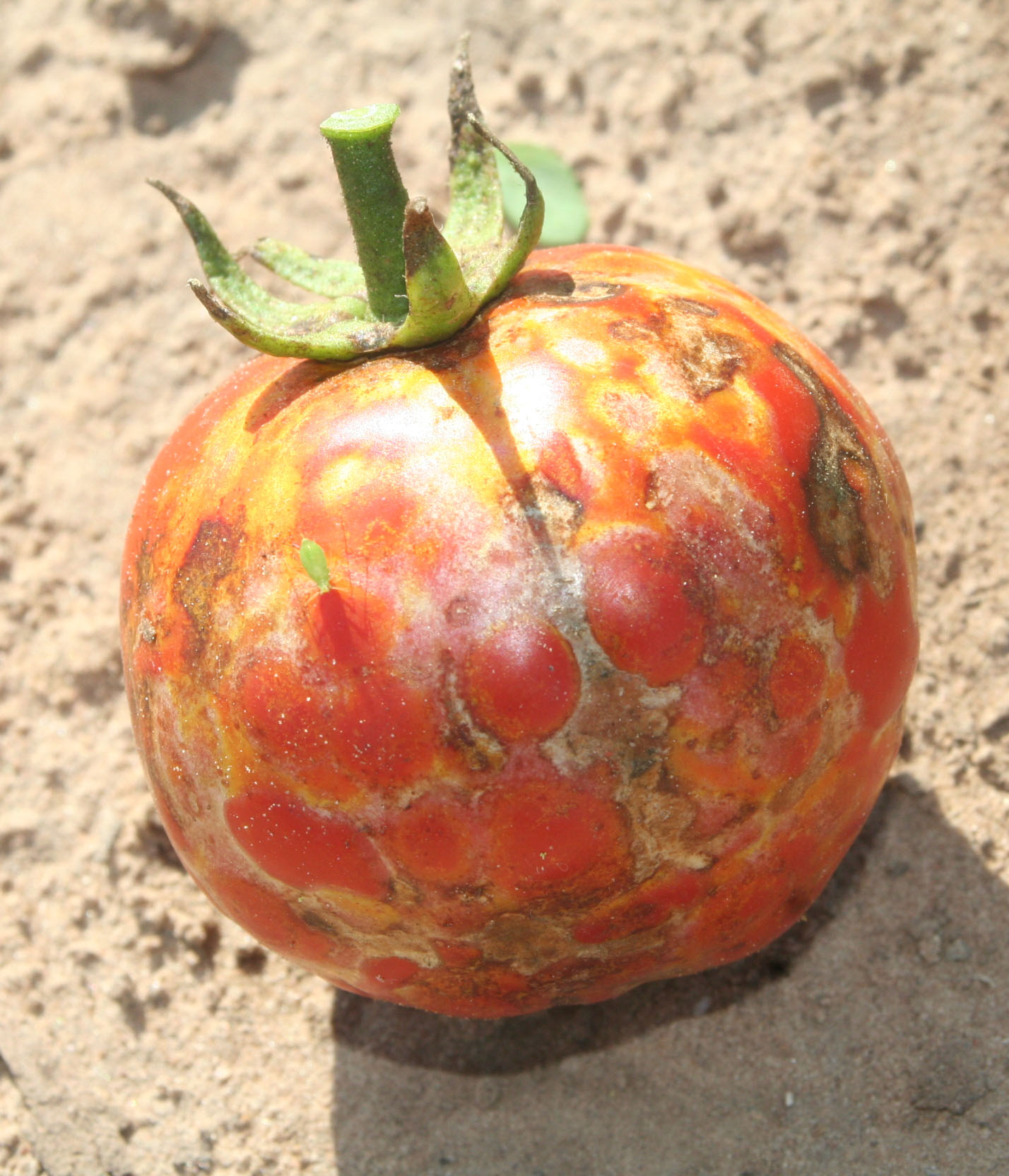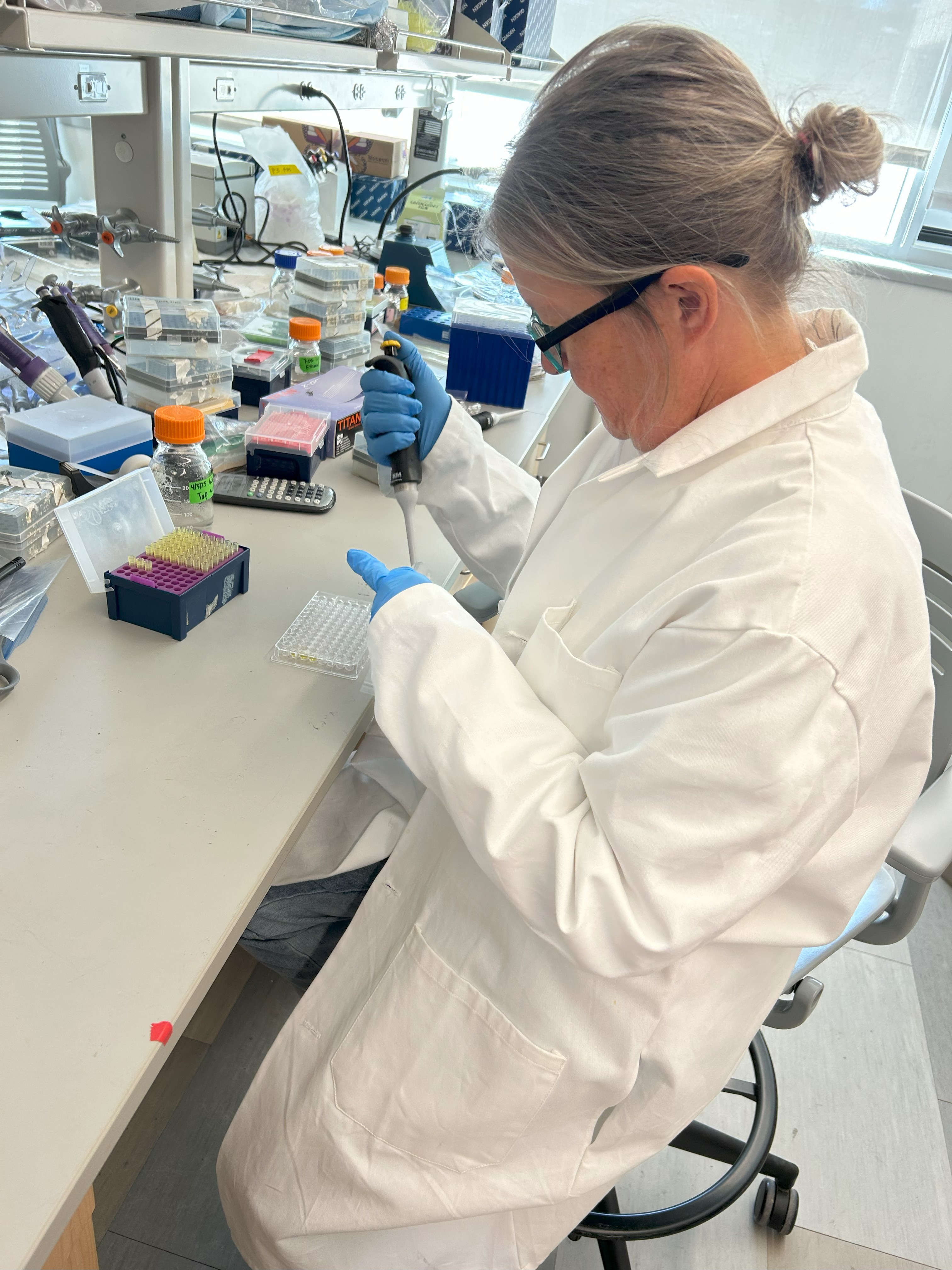Claudia Nischwitz - Utah State University Plant Clinic
The Communicator: Volume 6, Issue 10, October 2025
 Utah's tomato acreage is small compared to other states. Most farms are small and sell their produce at local farmers markets and roadside stands. For many of them the farm is their livelihood, and tomatoes are a high value crop. At a farmers' market or roadside stand, producers can charge $3-4 per pound of tomatoes resulting in over $11 million in revenue.
Utah's tomato acreage is small compared to other states. Most farms are small and sell their produce at local farmers markets and roadside stands. For many of them the farm is their livelihood, and tomatoes are a high value crop. At a farmers' market or roadside stand, producers can charge $3-4 per pound of tomatoes resulting in over $11 million in revenue.
In 2014, a local farmer contacted the Utah Plant Pest Diagnostic lab (UPPDL) about symptoms in their tomato plants. They had never seen these symptoms before. I did a site visit and found that not only the tomatoes were affected, but also the peppers. There were diseased plants in the greenhouse and in the field.
The symptoms matched Tomato spotted wilt virus (TSWV). TSWV is not common in Utah tomatoes, but I collected samples and confirmed the diagnosis in the lab. Once a plant is infected with TSWV, there is no cure and the fruit is unmarketable. And the virus is easily transmitted by thrip species to other plants.
However, the farm was growing their own transplants, and they lived in a rural area with no other vegetable farms within miles. So, where was the infection coming from?
What followed was a CSI style investigation into their farm. TSWV has a wide host range, so we collected weed samples around the vegetables, but they all tested negative. The only other option was the family’s flower garden. The flower garden was about 200 feet away from the greenhouse and the vegetable field. I found a blanket flower with virus symptoms and took it to the lab. This plant finally tested positive for TSWV. We had found the source.
The plant was a family heirloom and had made the move from one location to another over several generations. It had been brought to their garden several years back. It clearly had taken several years for thrips to move the virus from the blanket flower to the tomatoes. It was a difficult decision for the family to remove the plant, but they did remove it. The good news is that by removing the blanket flowers, they solved the problem with their tomatoes. They haven’t had a problem with TSWV since.
Note: This story also is available to download as a single-page pdf suitable for printing and distribution.

